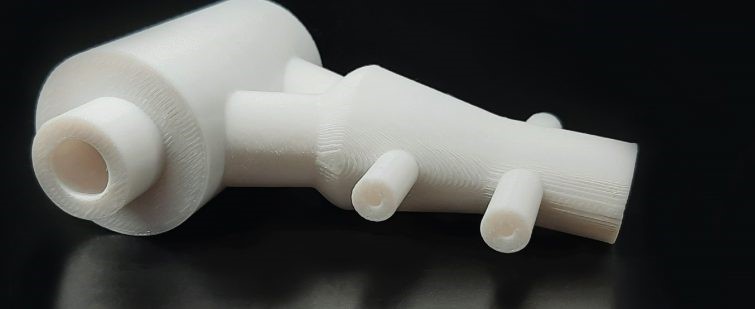 If you’ve been in the 3D printing industry for any significant amount of time, you’re probably aware of the market dominance that polymers have established in the realm of 3D printing materials. The popularity of this material only appears to have increased in recent years, as the 2019 Wohler’s Report* cites that over 77% of service providers deliver polymer parts. Compared to statistics from the previous year, this actually indicates a recent increase in polymer part-building services.
If you’ve been in the 3D printing industry for any significant amount of time, you’re probably aware of the market dominance that polymers have established in the realm of 3D printing materials. The popularity of this material only appears to have increased in recent years, as the 2019 Wohler’s Report* cites that over 77% of service providers deliver polymer parts. Compared to statistics from the previous year, this actually indicates a recent increase in polymer part-building services.
Much like the way that polymers serve as the industry standard material for 3D printing, fused deposition modeling (FDM™) acts as the “poster child” for 3D printers. In other words, if you brought up 3D printing to the average person, an FDM printer is what would likely come to their mind. What makes FDM printing so popular is that it is not only cost-effective but extremely versatile in its applications. Individuals enthusiastic about 3D printing for sport can easily acquire an FDM printer for personal projects, while the printer type also supports large-scale manufacturing facilities.
From automotive production to tooling, those in the manufacturing field value FDM for its ability to rapidly prototype, and to test the fit, form, and function of parts. While FDM excels in cost-effectiveness for design and printing (the first two steps of the integrative 3-step additive workflow) it’s all too common for bottlenecks to arise during the final step; post-printing. Without the use of automated post-printing technology, most support removal is left up to tedious industry-accepted methods like submersion tanks, which have notoriously long cycle times (4 or more hours is typical). This often results in the need for overnight processing, making it a challenge for servicers to deliver end-use parts in a timely manner.
Traditional support removal methods also run a high risk of producing inconsistent results, especially after evaporation has occurred. Because temperature control is often limited, and human error can cause issues when determining chemistry ratios, post-printing by means of a submersion tank often leads to varied results, creating the need for excessive maintenance activity on parts.
If your operation has used submersion tanks for post-printing, you’ve probably dealt with the inefficiencies that arise when additional support removal is required. Not only does manual post-printing waste valuable technician time, but it further slows down this already sluggish third step of the additive workflow. This technician time devoted to post-processing could be otherwise spent working on more significant projects.
Our latest white paper discusses a revolutionary software-driven method that utilizes Volumetric Velocity Dispersion (VVD) technology to streamline the FDM workflow. In the paper, we discuss how this solution uses configurable agitation and concentrated flex nozzles to dissolve support material quickly, ensuring constant support removal action.
By combining unique mechanical and chemical rates of removal with software intelligence, we’ve created an entirely unique and efficient opportunity for FDM users. With this technology, users can benefit from some of the fastest cycle times in the industry, consistent results, and higher throughputs. We’re pleased to present 3D printing users with an opportunity to cut down on costs while wasting less time, and fewer resources.
Specifically, this paper discusses the benefits of streamlining your workflow with VVD technology, and speaks to:
- This automated solution’s significant (73%) decrease in cycle time compared to the common submersion tank solution.
- The ability to process very complex parts featuring multiple internal channels filled with support material at comparable rates to basic parts.
- Alleviating the post-print bottleneck and expediting iterative designs to ramp up production volumes with this software-controlled approach.
Download this resource to learn about the software-driven automation, unique VVD technology, and patent-pending chemicals that make this automated technology so impactful to the FDM additive workflow.
-> Want to learn more? Contact Us
-> Return to Blog Homepage
*Wohlers, Terry, Robert Ian Campbell, Ray Huff, Olaf Diegel, and Joseph Kowen. Wohlers Report 2019 3D Printing and Additive Manufacturing State of the Industry. Fort Collins, CO: Wohlers Associates, 2019.